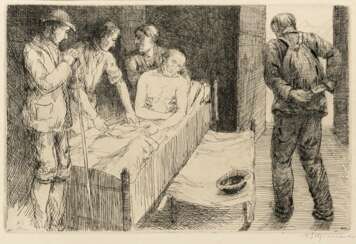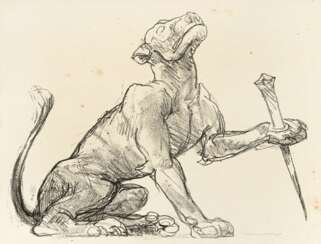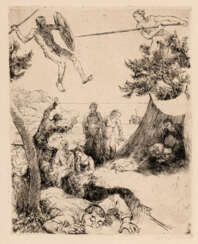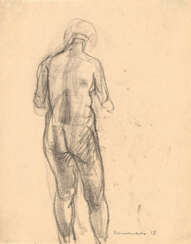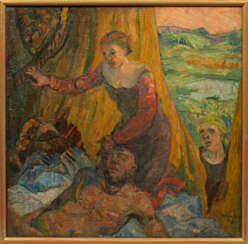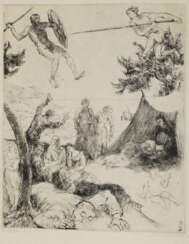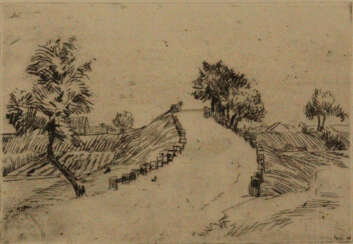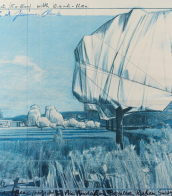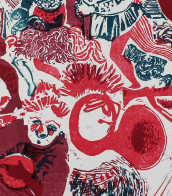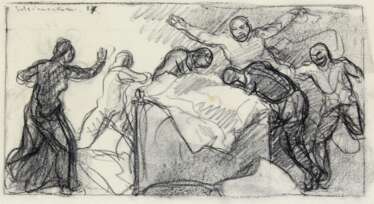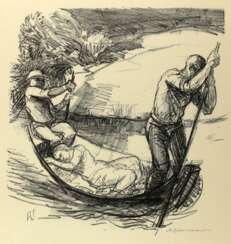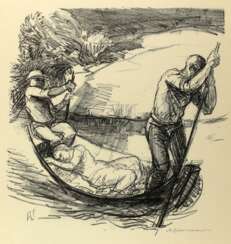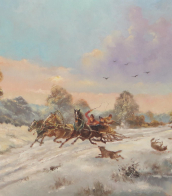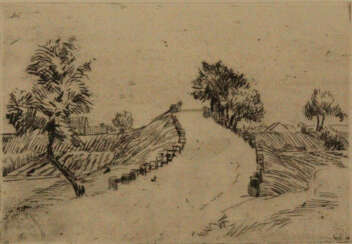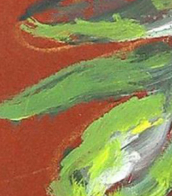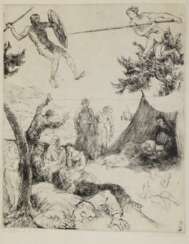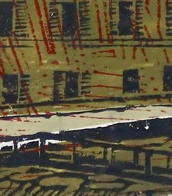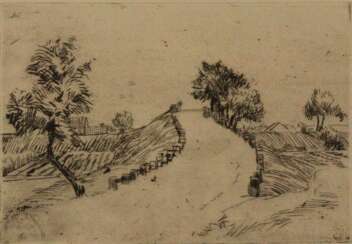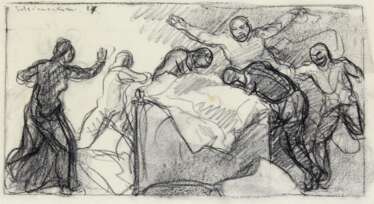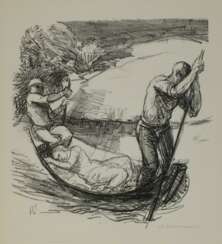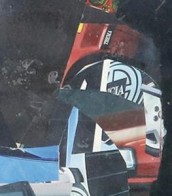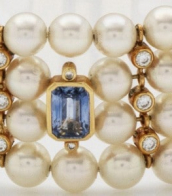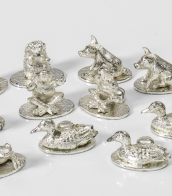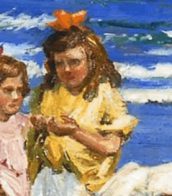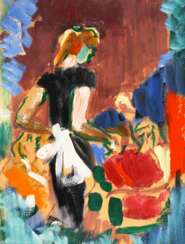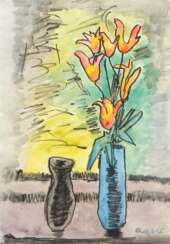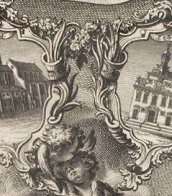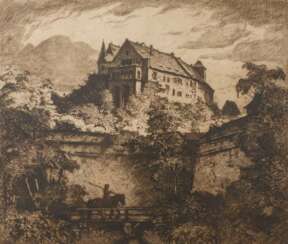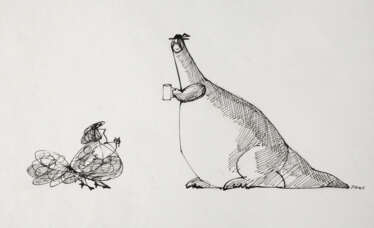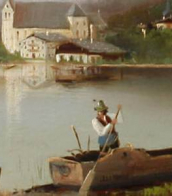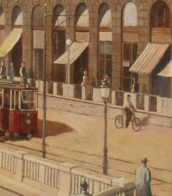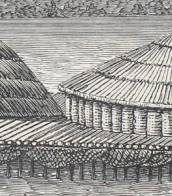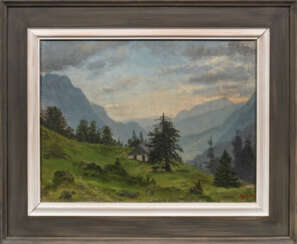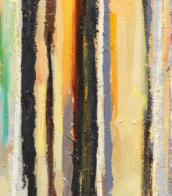schinnerer
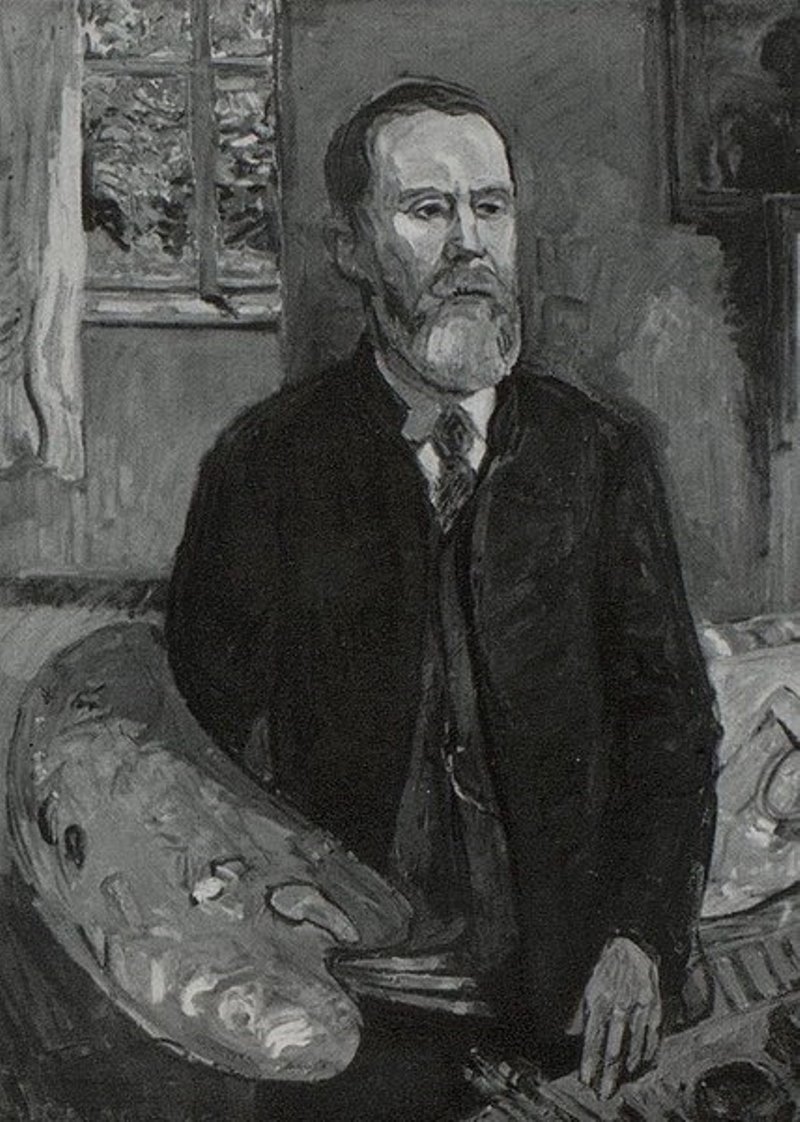
Adolf Schinnerer was a German painter, draughtsman and graphic artist.
He studied at the Art Academy in Karlsruhe and at the Academy of Fine Arts in Munich, and in 1920 took a position as professor of art at the Kunstgewererbeschule in Munich. In Munich, Schinnerer also became one of the founders of the New Secession in 1913. Initially in his works Schinnerer proceeded from the style of French Impressionism, creating mainly figurative paintings and landscapes, later moving to an expressive style of depiction. In the early twentieth century, his prints and paintings were widely exhibited in Italy, France, Austria and Germany.
As a master of dry etching, Schinnerer was an extremely prolific artist, producing hundreds of images and prints; he also executed many illustrations, among them the 1921 edition of William Shakespeare's The Tempest.
In 1937, Schinnerer's graphics were withdrawn from a number of museums and public collections as part of the Nazi "Degenerate Art" campaign. Nevertheless, after the war, the artist regained his reputation: Adolf Schinnerer was a member of the German Artists' Association, participated in the re-establishment of the Union of Original Prints, and the Friends of the Munich State Graphic Collection.
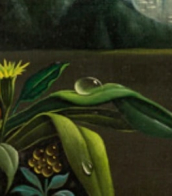

Adolf Schinnerer was a German painter, draughtsman and graphic artist.
He studied at the Art Academy in Karlsruhe and at the Academy of Fine Arts in Munich, and in 1920 took a position as professor of art at the Kunstgewererbeschule in Munich. In Munich, Schinnerer also became one of the founders of the New Secession in 1913. Initially in his works Schinnerer proceeded from the style of French Impressionism, creating mainly figurative paintings and landscapes, later moving to an expressive style of depiction. In the early twentieth century, his prints and paintings were widely exhibited in Italy, France, Austria and Germany.
As a master of dry etching, Schinnerer was an extremely prolific artist, producing hundreds of images and prints; he also executed many illustrations, among them the 1921 edition of William Shakespeare's The Tempest.
In 1937, Schinnerer's graphics were withdrawn from a number of museums and public collections as part of the Nazi "Degenerate Art" campaign. Nevertheless, after the war, the artist regained his reputation: Adolf Schinnerer was a member of the German Artists' Association, participated in the re-establishment of the Union of Original Prints, and the Friends of the Munich State Graphic Collection.


Adolf Schinnerer was a German painter, draughtsman and graphic artist.
He studied at the Art Academy in Karlsruhe and at the Academy of Fine Arts in Munich, and in 1920 took a position as professor of art at the Kunstgewererbeschule in Munich. In Munich, Schinnerer also became one of the founders of the New Secession in 1913. Initially in his works Schinnerer proceeded from the style of French Impressionism, creating mainly figurative paintings and landscapes, later moving to an expressive style of depiction. In the early twentieth century, his prints and paintings were widely exhibited in Italy, France, Austria and Germany.
As a master of dry etching, Schinnerer was an extremely prolific artist, producing hundreds of images and prints; he also executed many illustrations, among them the 1921 edition of William Shakespeare's The Tempest.
In 1937, Schinnerer's graphics were withdrawn from a number of museums and public collections as part of the Nazi "Degenerate Art" campaign. Nevertheless, after the war, the artist regained his reputation: Adolf Schinnerer was a member of the German Artists' Association, participated in the re-establishment of the Union of Original Prints, and the Friends of the Munich State Graphic Collection.


Adolf Schinnerer was a German painter, draughtsman and graphic artist.
He studied at the Art Academy in Karlsruhe and at the Academy of Fine Arts in Munich, and in 1920 took a position as professor of art at the Kunstgewererbeschule in Munich. In Munich, Schinnerer also became one of the founders of the New Secession in 1913. Initially in his works Schinnerer proceeded from the style of French Impressionism, creating mainly figurative paintings and landscapes, later moving to an expressive style of depiction. In the early twentieth century, his prints and paintings were widely exhibited in Italy, France, Austria and Germany.
As a master of dry etching, Schinnerer was an extremely prolific artist, producing hundreds of images and prints; he also executed many illustrations, among them the 1921 edition of William Shakespeare's The Tempest.
In 1937, Schinnerer's graphics were withdrawn from a number of museums and public collections as part of the Nazi "Degenerate Art" campaign. Nevertheless, after the war, the artist regained his reputation: Adolf Schinnerer was a member of the German Artists' Association, participated in the re-establishment of the Union of Original Prints, and the Friends of the Munich State Graphic Collection.


Adolf Schinnerer was a German painter, draughtsman and graphic artist.
He studied at the Art Academy in Karlsruhe and at the Academy of Fine Arts in Munich, and in 1920 took a position as professor of art at the Kunstgewererbeschule in Munich. In Munich, Schinnerer also became one of the founders of the New Secession in 1913. Initially in his works Schinnerer proceeded from the style of French Impressionism, creating mainly figurative paintings and landscapes, later moving to an expressive style of depiction. In the early twentieth century, his prints and paintings were widely exhibited in Italy, France, Austria and Germany.
As a master of dry etching, Schinnerer was an extremely prolific artist, producing hundreds of images and prints; he also executed many illustrations, among them the 1921 edition of William Shakespeare's The Tempest.
In 1937, Schinnerer's graphics were withdrawn from a number of museums and public collections as part of the Nazi "Degenerate Art" campaign. Nevertheless, after the war, the artist regained his reputation: Adolf Schinnerer was a member of the German Artists' Association, participated in the re-establishment of the Union of Original Prints, and the Friends of the Munich State Graphic Collection.
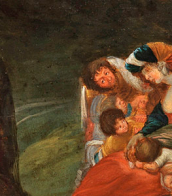

Adolf Schinnerer was a German painter, draughtsman and graphic artist.
He studied at the Art Academy in Karlsruhe and at the Academy of Fine Arts in Munich, and in 1920 took a position as professor of art at the Kunstgewererbeschule in Munich. In Munich, Schinnerer also became one of the founders of the New Secession in 1913. Initially in his works Schinnerer proceeded from the style of French Impressionism, creating mainly figurative paintings and landscapes, later moving to an expressive style of depiction. In the early twentieth century, his prints and paintings were widely exhibited in Italy, France, Austria and Germany.
As a master of dry etching, Schinnerer was an extremely prolific artist, producing hundreds of images and prints; he also executed many illustrations, among them the 1921 edition of William Shakespeare's The Tempest.
In 1937, Schinnerer's graphics were withdrawn from a number of museums and public collections as part of the Nazi "Degenerate Art" campaign. Nevertheless, after the war, the artist regained his reputation: Adolf Schinnerer was a member of the German Artists' Association, participated in the re-establishment of the Union of Original Prints, and the Friends of the Munich State Graphic Collection.


Adolf Schinnerer was a German painter, draughtsman and graphic artist.
He studied at the Art Academy in Karlsruhe and at the Academy of Fine Arts in Munich, and in 1920 took a position as professor of art at the Kunstgewererbeschule in Munich. In Munich, Schinnerer also became one of the founders of the New Secession in 1913. Initially in his works Schinnerer proceeded from the style of French Impressionism, creating mainly figurative paintings and landscapes, later moving to an expressive style of depiction. In the early twentieth century, his prints and paintings were widely exhibited in Italy, France, Austria and Germany.
As a master of dry etching, Schinnerer was an extremely prolific artist, producing hundreds of images and prints; he also executed many illustrations, among them the 1921 edition of William Shakespeare's The Tempest.
In 1937, Schinnerer's graphics were withdrawn from a number of museums and public collections as part of the Nazi "Degenerate Art" campaign. Nevertheless, after the war, the artist regained his reputation: Adolf Schinnerer was a member of the German Artists' Association, participated in the re-establishment of the Union of Original Prints, and the Friends of the Munich State Graphic Collection.
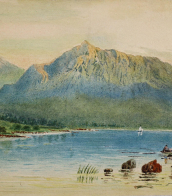

Adolf Schinnerer was a German painter, draughtsman and graphic artist.
He studied at the Art Academy in Karlsruhe and at the Academy of Fine Arts in Munich, and in 1920 took a position as professor of art at the Kunstgewererbeschule in Munich. In Munich, Schinnerer also became one of the founders of the New Secession in 1913. Initially in his works Schinnerer proceeded from the style of French Impressionism, creating mainly figurative paintings and landscapes, later moving to an expressive style of depiction. In the early twentieth century, his prints and paintings were widely exhibited in Italy, France, Austria and Germany.
As a master of dry etching, Schinnerer was an extremely prolific artist, producing hundreds of images and prints; he also executed many illustrations, among them the 1921 edition of William Shakespeare's The Tempest.
In 1937, Schinnerer's graphics were withdrawn from a number of museums and public collections as part of the Nazi "Degenerate Art" campaign. Nevertheless, after the war, the artist regained his reputation: Adolf Schinnerer was a member of the German Artists' Association, participated in the re-establishment of the Union of Original Prints, and the Friends of the Munich State Graphic Collection.

